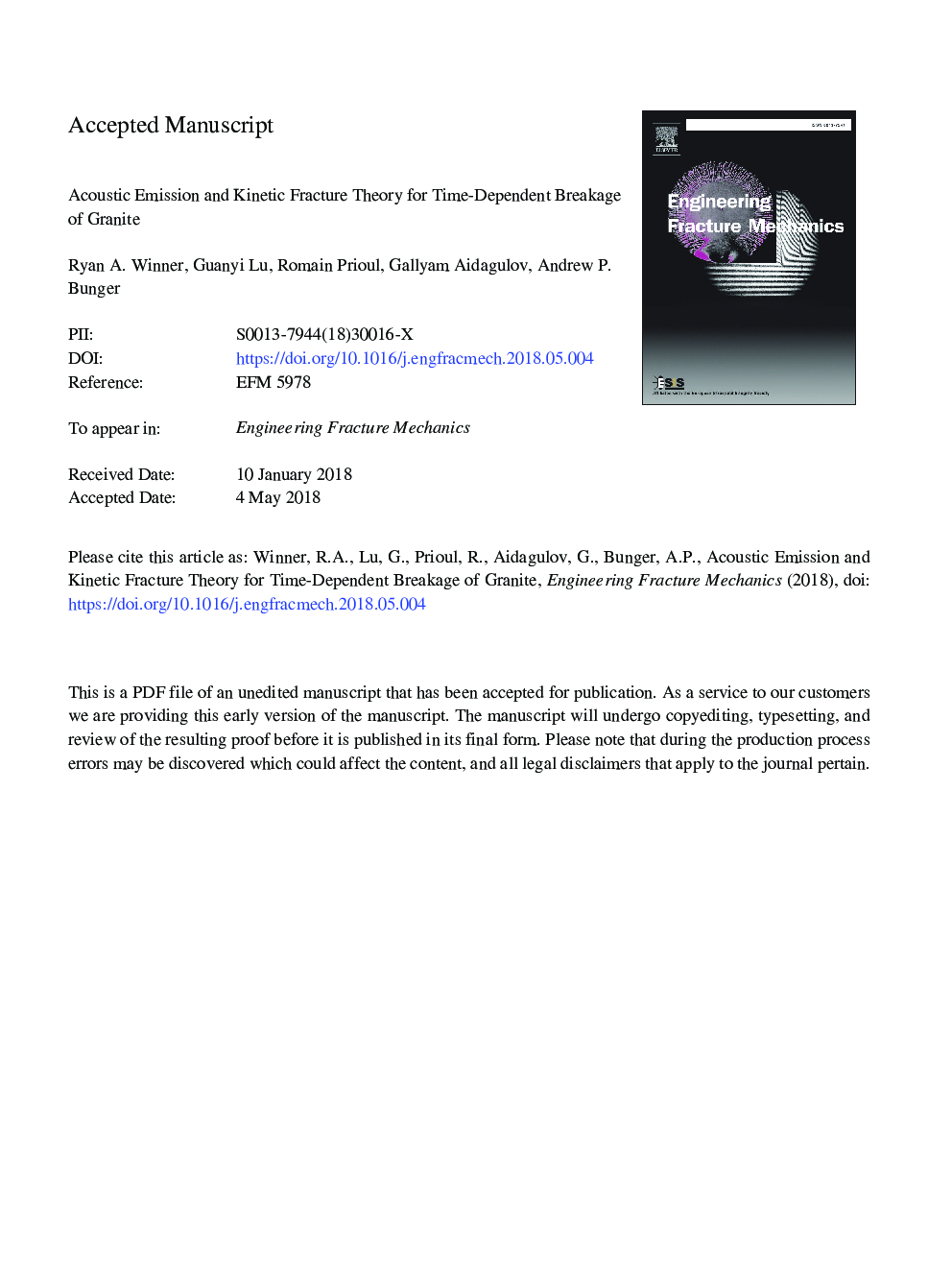| Article ID | Journal | Published Year | Pages | File Type |
|---|---|---|---|---|
| 7168642 | Engineering Fracture Mechanics | 2018 | 32 Pages |
Abstract
Earthquakes, mine failures, and initiation of hydraulic fractures have all been associated with time-delayed breakage of rocks subjected to loads insufficient to incur instantaneous failure. To better model and identify failure precursors for rocks under these so-called static fatigue conditions, Acoustic Emission (AE) was monitored in beams of Coldspring Charcoal Granite subjected to constant three point loading. As a result of varying the magnitude of the loading, the times to failure range from O(101)toO(105) seconds. The experiments show a number of consistencies in the AE data. In all cases the event rate exponentially declines for a period that is about 0.4-0.6 of the total time to failure. This period is followed by a period in which the event rate exponentially increases. The total number of events generated during these two periods is also consistent among the experiments. Motivated by these observations, we propose a modified kinetic fracture theory that captures both the period of event rate decline and the period of event rate increase. It does this by firstly accounting for early time depletion of available bonds for breakage, similar to previous models. The model also accounts for generation of critically stressed bonds in the vicinity of previous bond breakages due to stress redistribution, thereby also predicting the event rate increase and further providing consistency with the observed tendency of the events to become increasingly concentrated around the eventual plane of failure as time progresses.
Related Topics
Physical Sciences and Engineering
Engineering
Mechanical Engineering
Authors
Ryan A. Winner, Guanyi Lu, Romain Prioul, Gallyam Aidagulov, Andrew P. Bunger,
